-video-
-images-
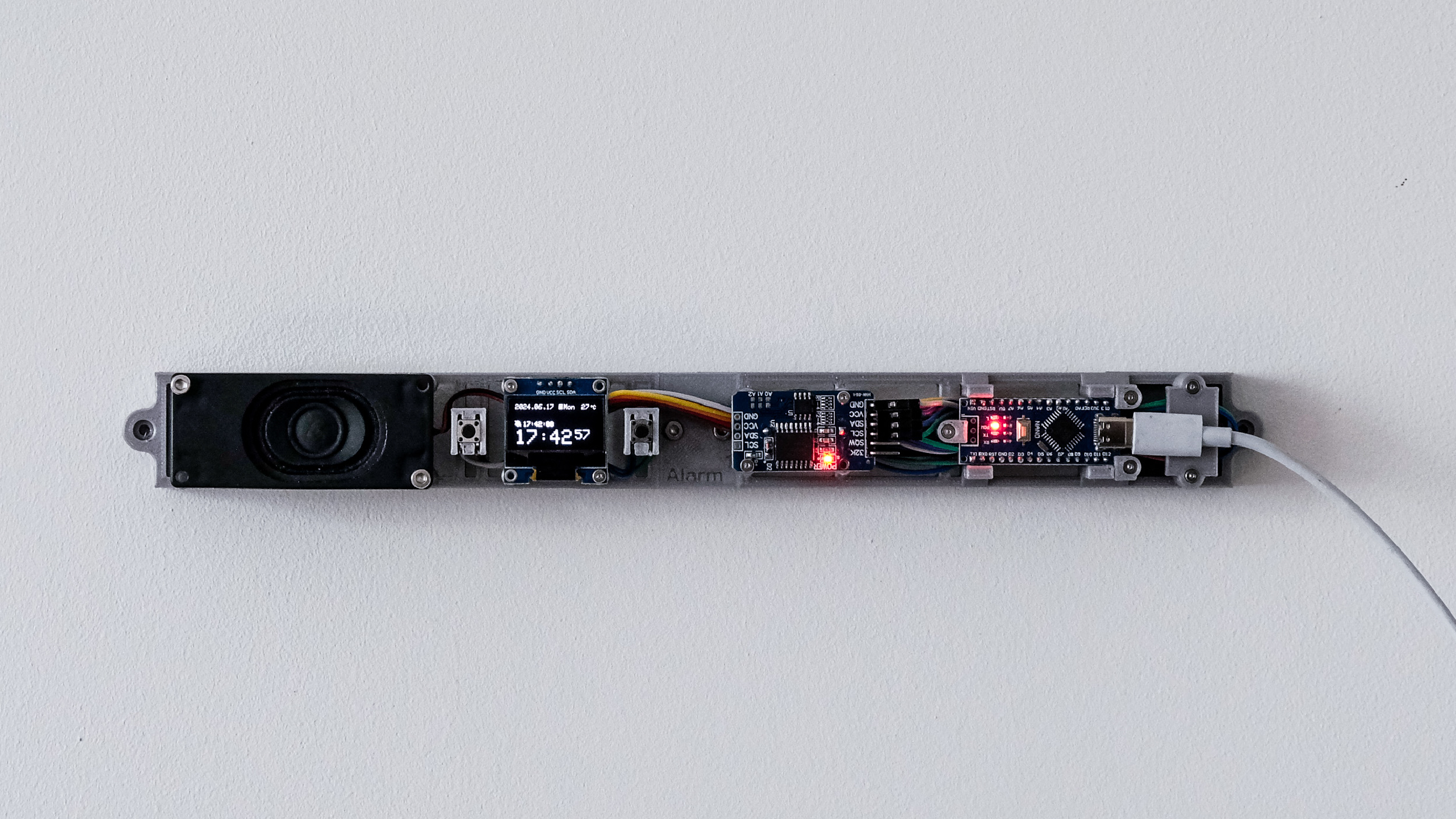
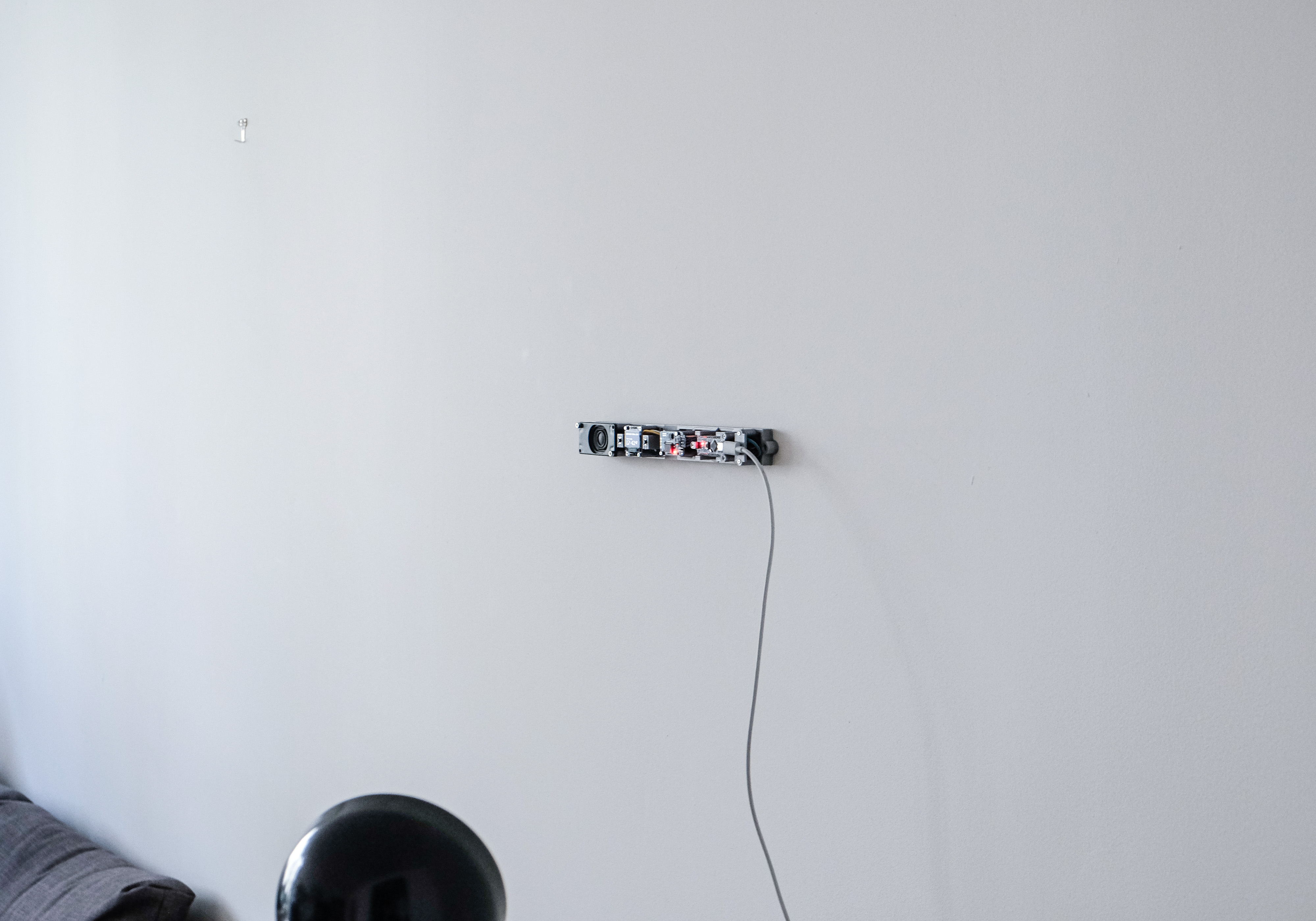

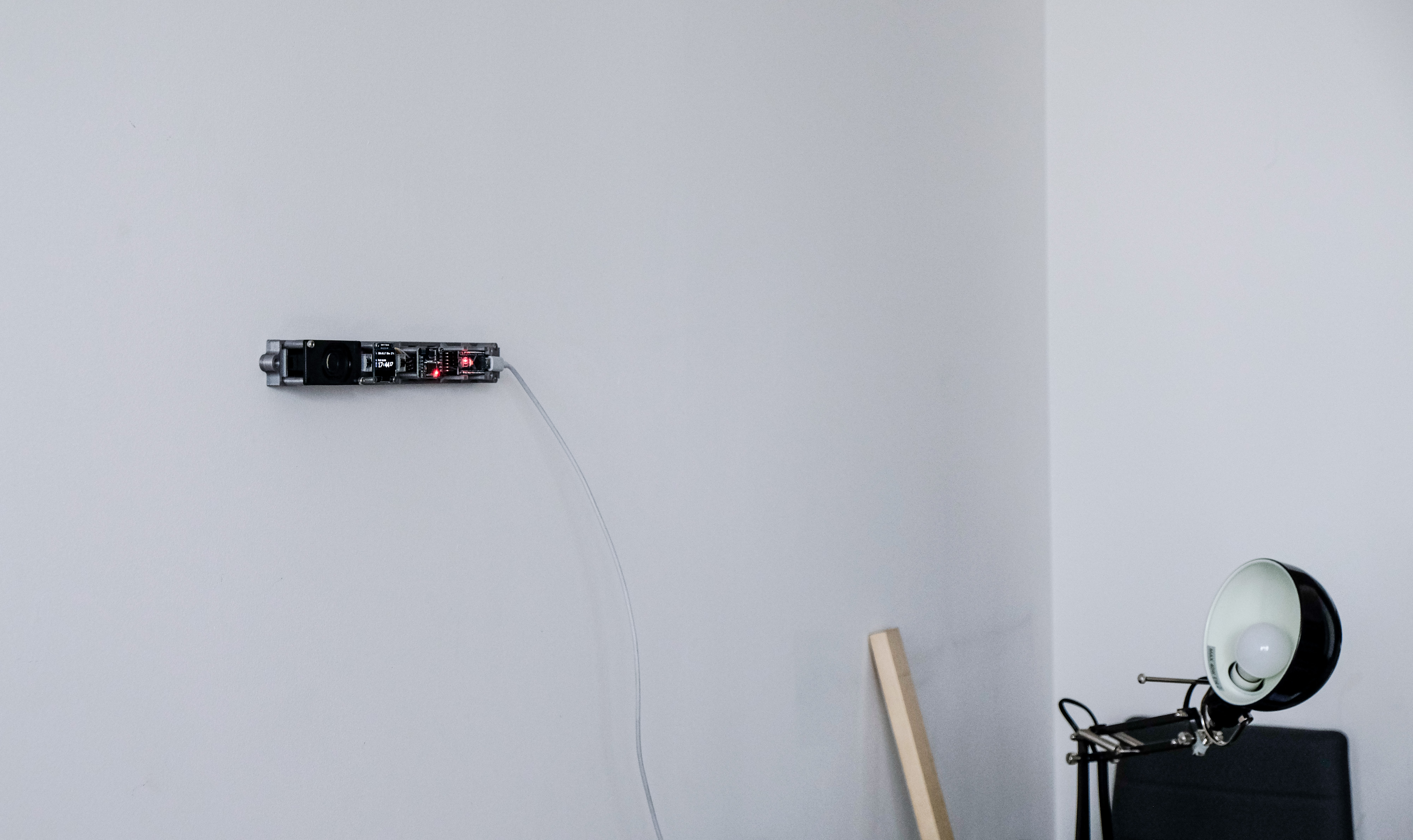
-text-
Alarm Type 1
It is an alarm clock, part of a series of design experiments inspired by architectural history, exploring the typologies of compositions between Electrical/Electronic Components and Mechanical Components.
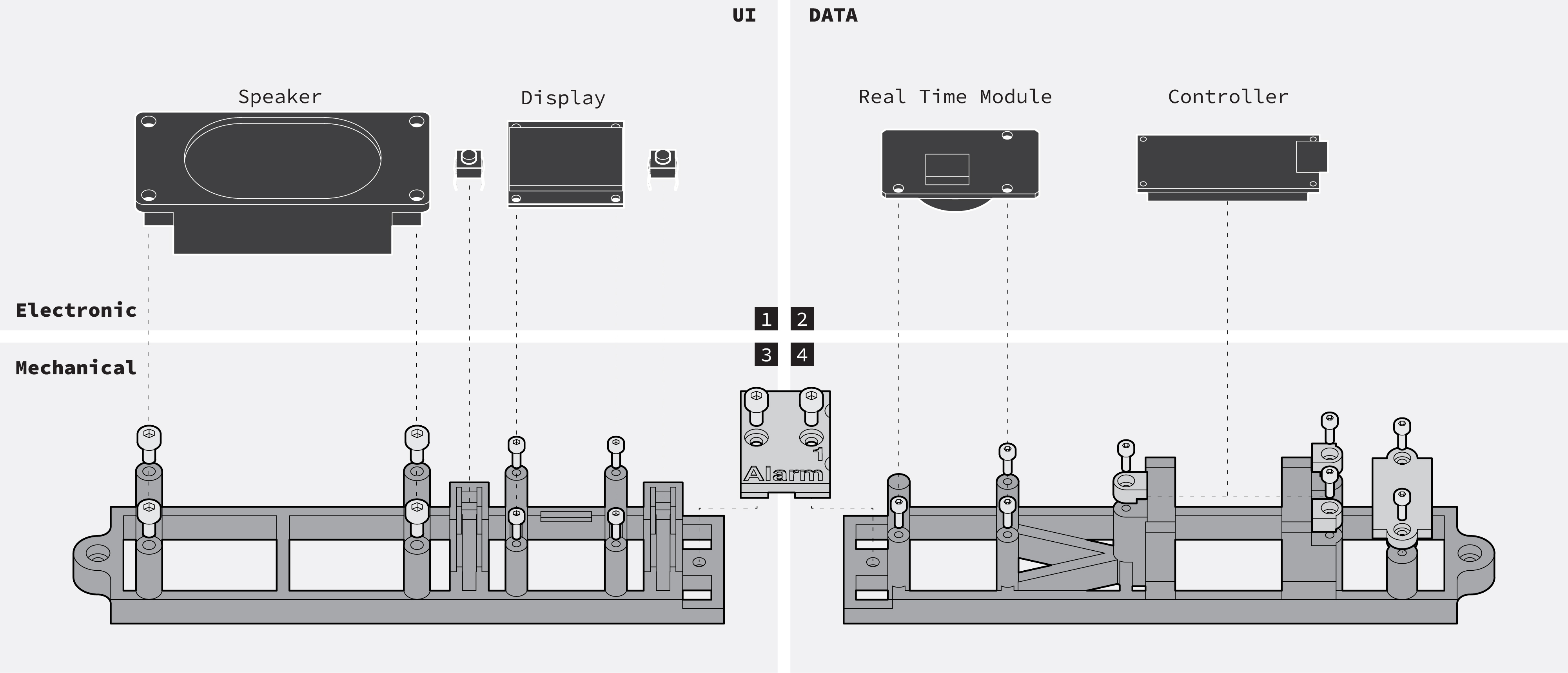
From Left to Right (diagrams 1, 3 to 2, 4)
Electronic components are evenly distributed along their longer sides into a linear form at the same height level.
User interface (i.e. speaker, display, buttons) on the left, data processing (i.e. real-time module, micro controller) on the right.
UI modules stay in the same hierarchy as other modules.
From Top to Button (diagram 1, 2 to 3, 4)
Electronic modules are attached to the truss-like structure.
The generic hierarchy of components in electronics is redefined here. The relationship among electronic and mechanical parts is not covering or being covered, rather there are two parallel systems serving each other.
Contexts
Before explaining the thoughts behind, there are some terms that should be clarified first for a better understanding.

1. E-product is used to describe both electrical and electronic products.
2. E-part is used to describe a part in an E-product that is essential for energy consumption and/or computation.
3. N-part is used to describe a part that is built around E-parts.
(*The word ‘Electronic’ is often about dealing with signals - the flow of electrons. The word ‘Electrical’ is often used to describe things related to electrical power. )
Electrical/electronic and mechanical engineering are two of the most obvious categories of engineerings in an E-product.
E-parts and N-parts are often highly intertwined with each other. The deep mixture of the two is often an element of social and environmental issues. Such as fragile components applied for shortening the life span of a product; or the low product recyclability due to the difficulty of splitting mixed materials.
Despite the complex reasons that lead to the mixing of the E-parts and N-parts, this series of experiments tries to probe different relationships between E-parts and N-parts - ways of constructing E-products.
This series of experiments embraces transparency in design and construction, seeking to communicate the underlying structure and function of a modern product, and probing positive relationships among different systems in E-products.
The experiments are influenced by elements in architectural histories such as Learning from Las Vegas, the transparency in design and construction in High-tech architecture, especially Bowellist architecture, and concepts of servant and served spaces by Louis Khan. In modernist architecture, different serving systems are often categorised and arranged along different logics.
-Further Insights-
Incentives of the Design Experiment
As product design in the market becomes more boring, fetishised, consumerist and environmentally irresponsible, there is a need to discuss other possibilities of constructing things from the beginning of their life cycles.
The way product design generally perceived is a continuation of the design in traditional tools - like a hammer or a chair - what you see is what you get. Materials and structures serve mechanical functions.
However, in designing E-products, the flow of electrons is too small to be visible; The logic of software is also invisible. When there are few mechanical functions involved, the design of physical aspects of a E-product becomes tricky.
This project bears the awareness of the difference between E-products and traditional N-products, probing new possibilities of designing E-products.
Architectural Influences
Comparing to rich architectural history, the history of industrial design is very short. As they are both about physical media through which services are delivered, for product design, there are many could be learnt from architectural history. In addition, architecture also experienced the new era of embedding electrical and electronic systems.

Bowellist architecture is a radical example. Lloyd's building, London and The Pompidou Centre, Paris are the most obvious although a bit extreme cases for explaining the separation and organisation of different systems in a construction.
Their serving systems are completely outside of the served spaces to maximise the utility of the inner space of a building, and to communicate the reconfigurability of the wholes system. Space is merely one element of architecture - there are plenty of other elements that matter for a building.
There are many more examples in modernist architecture. Complex systems are often constructively categorised into smaller systems based on different logics.
The Experimental Layout of E-parts

In the case of Alarm Type 1: Output, Input, processing. Components are arranged horizontally along eyesight.
The linear arrangement is to simplify and clarify the logic among components. It turns individual components into a comprehensible sequence. (This is one of many logics that could be applied to arrange components)
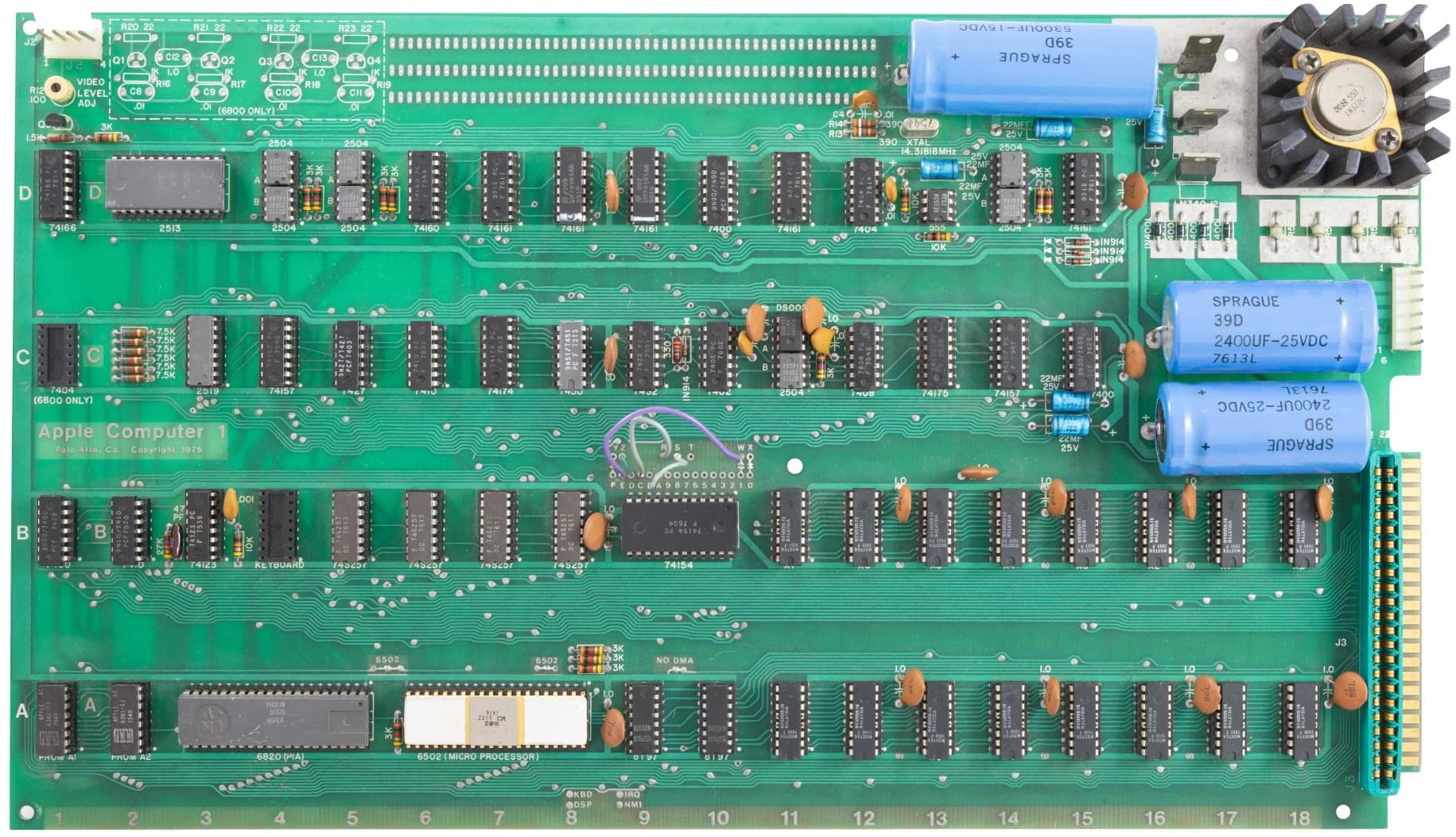
Similar ideas could be found in the Apple Computer 1 released in 1976. The grid system of chips served the clarity of its system instead of the need to be fitted in a specific ‘black box’. (It is worth mentioning that, for Apple I, the printed circuit board is the electronic product itself.)
Aesthetically, the arrangement also enhances the unconventional ratio of the product. It offers new and unfamiliar aesthetics, which is important for delivering new thoughts about the construction of a product.
Different from physical appearances from generic consumer electronics, the most obvious visual quality in this case is the relationship among different components.
A New Spectrum of Seeing Products
There is a new spectrum of products - a new perspective - based on different relationships between E-parts and N-parts.
A naked RAM card consists pure E-parts; a hairdryer is a mixture of E-parts and N-parts; a chair is usually made of pure N-parts;
This spectrum is defined based on the ratio between E-parts and N-parts. There would be many typologies of product constructions that could be explored within it.
TJ Chen
Finished on 12 Jul. 2024 in London
Details revised on 29 Jul. 2024 in London
-
Jun. 2024
-
Page Edited:
2024-07-11
2024-06-19